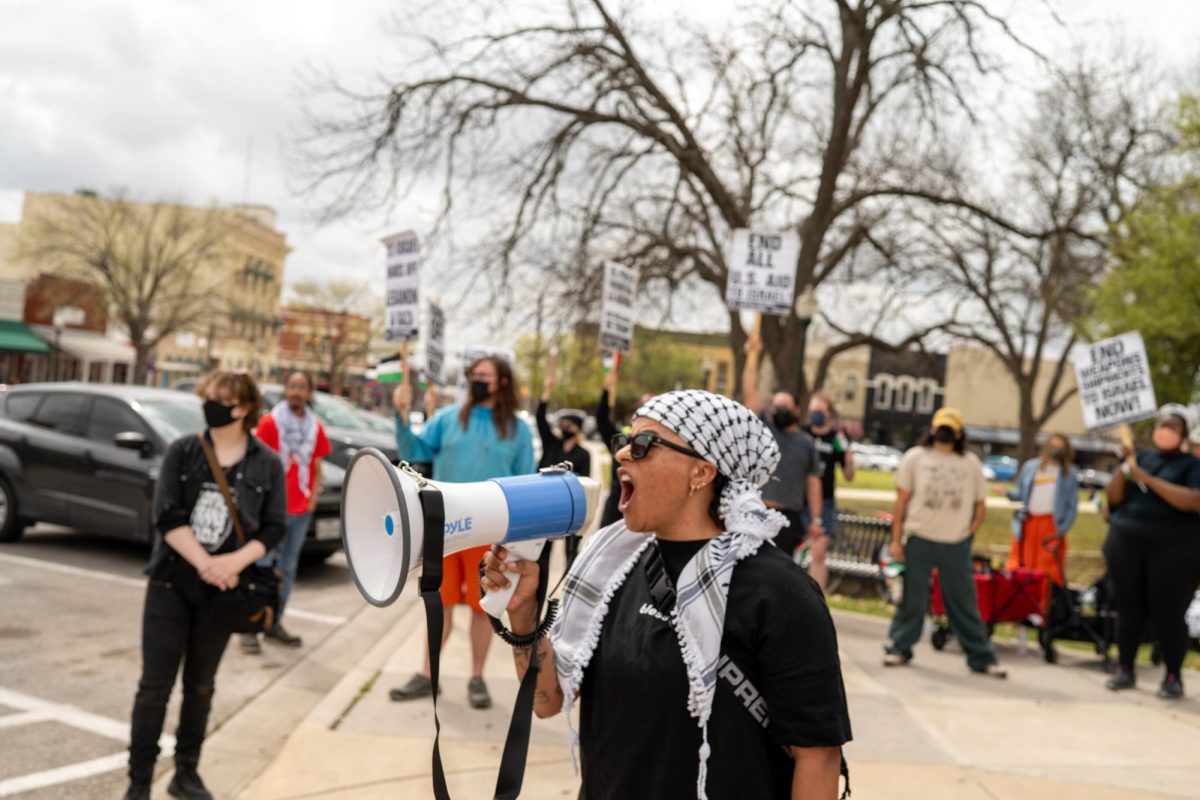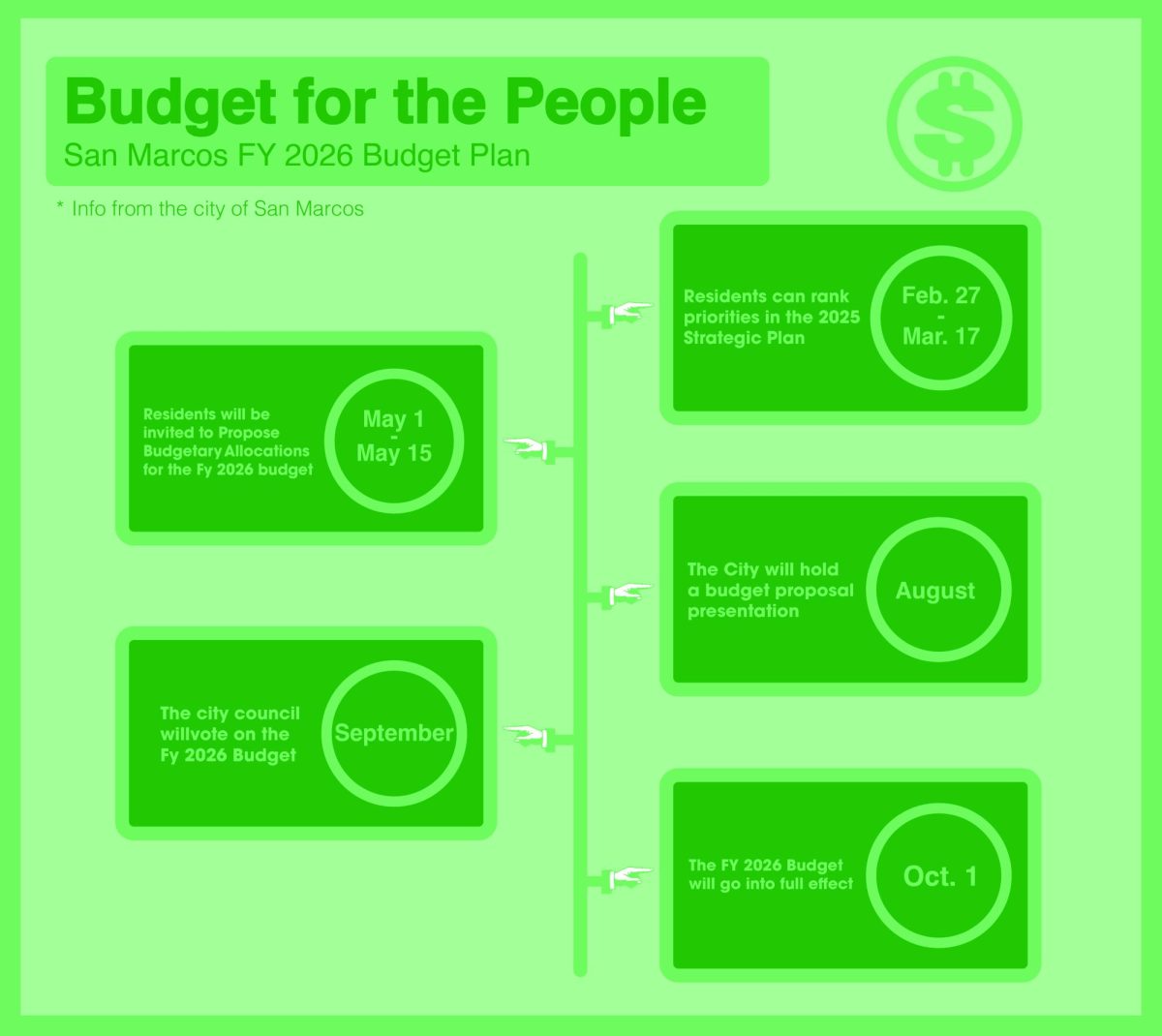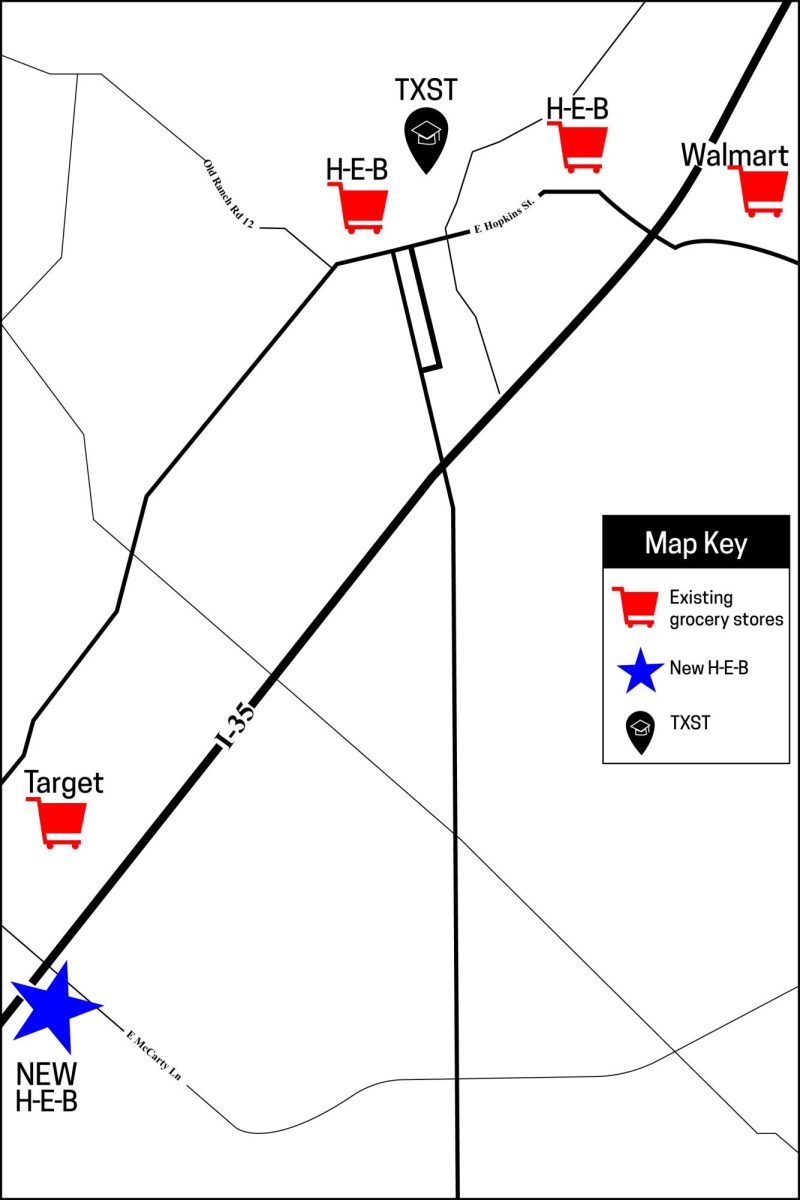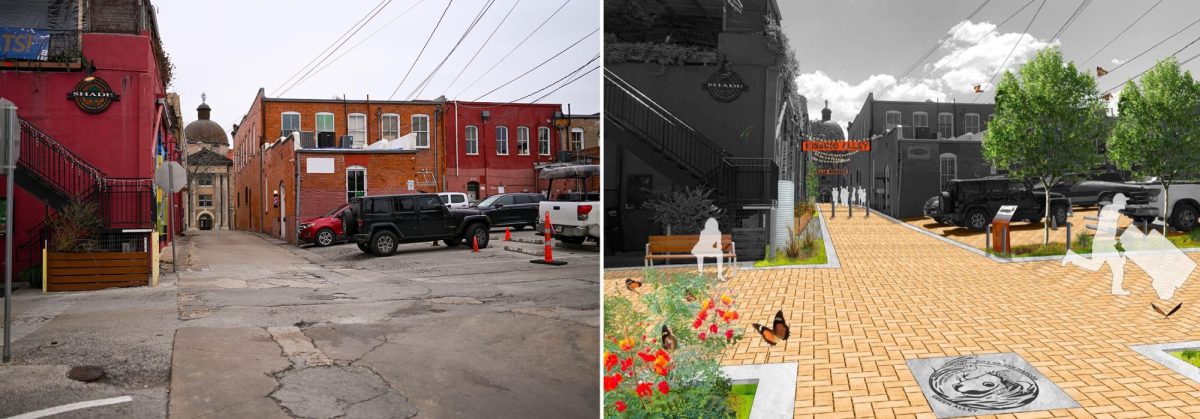The first phase of construction to reinstate quiet zones at train crossings in San Marcos was completed on Oct. 29, with the remaining work scheduled for completion by March 2025.
According to the Federal Railroad Administration (FRA), cities or counties can establish quiet zones, where trains are not allowed to sound their horns if the crossings follow specific safety regulations. However, since June, residents are hearing the train horns in San Marcos for the first time since 2015, when the quiet zones were first instated.
Union Pacific and the FRA inspected San Marcos train crossings in June and found they no longer met the safety rules needed for quiet zones.
“I’ve been working hard to expedite all the permits to go through the approval process, and I’m hoping there’s no comments,” Senior Engineer for San Marcos Rey Garcia said.
The first phase of repairs, which involved fixing missing or damaged signs and striping, began on Oct. 21 and was completed by Oct. 29 at all 18 quiet zone crossings.
The city of San Marcos applied for a Public Improvement Permit that will allow the city to begin the remaining construction required to reinstate the quiet zones. Garcia said the permit application will be reviewed by Union Pacific soon.
“If they’re approved, then more than likely we’ll be looking at the next couple of weeks [to start construction],” Garcia said. “If they have comments, it’ll be three to four weeks away. Hopefully, by the end of November, we’ll be permitted, and we can start [construction] in early December.”
San Marcos has 19 train crossings, 18 of which previously had quiet zones and are now being repaired. The June inspection took place because the city plans to establish a new quiet zone for the Uhland Road crossing, which was never previously a quiet zone.
“We’re trying to minimize the amount of time the trains are sounding their horns,” Garcia said. “[The projects being separate] is the fastest way to reinstate the quiet zone.”
According to the press release, San Marcos aims to request quiet zone reinstatement by March 2025, with Union Pacific approval expected a few weeks later, according to Garcia.
Garcia said the next phase of construction will take six to eight weeks and consist of median and curb concrete replacement for six crossings: McCarty Lane, Centerpoint Road, Posey Road and three crossings on Hopkins Street.
Michael Paxton has lived on Haynes Street between East Hopkins and Rio Vista Street, where two rail lines meet, for four years. According to Paxton, the two tracks are 35 and 80 feet away from his house, and the horns are unbearable.
“The worst part is that you don’t have any warning if you know the train is coming, so you can put in hearing protection or go inside,” Paxton said. “When I’m working in the yard and then I [can see] as the engineer hits the horn and it feels like my ears are going to bleed.”
Paxton said San Marcos’ communication outreach has not been successful as he wasn’t aware of the removal of the quiet zones.
Maddie Baker, communications specialist for the city of San Marcos, said the initial outreach after the removal of the quiet zones was as efficient and extensive as possible.
“The press release was sent out the weekend before the train horns were sounding and we had several media outlets reach out to us to cover it,” Baker said.
Nate Rosales has lived in San Marcos for 10 years. He currently lives between Wells Fargo and Railyard Bar and Grill, near the LBJ crossing.
Rosales said living with train horns is more irritating now because he usually works from home.
“There’s nothing really to do about the noise, except wait,” Rosales said. “If I’m in a meeting, I just have to stop and mute myself. It also impedes my sleep and wakes my dogs up.”
According to a press release from the city of San Marcos, the city will be implementing a new curb design standard and Garcia said all the crossings will be inspected every two to three years.
“Hopefully with this upcoming election, it can be ensured that the city needs to stay on top of things and make sure that these things are being taken care of,” Rosales said. “I love this city, and I want to continue to see it taken care of, and it doesn’t feel like that happens often.”






















Bobby • Mar 9, 2025 at 8:33 am
Moving. This lowers the quality of life here so much that my wife and I have decided to move. After 17 years here. It’s ridiculous.